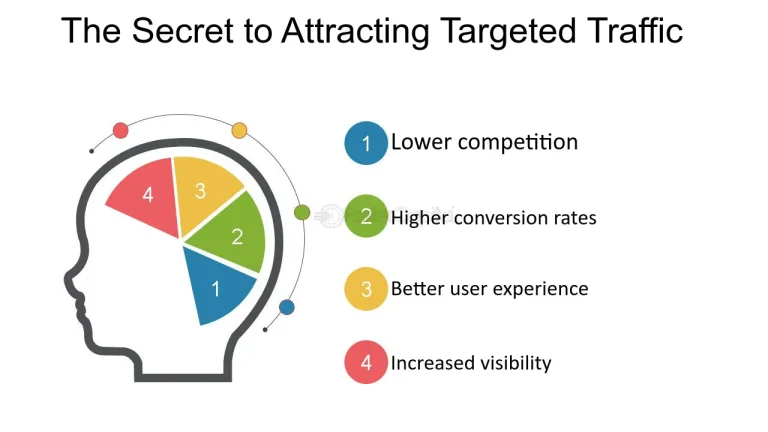Streamlining Safari Application Testing with Jenkins: Advanced Configuration for Continuous Integration
Continuous Integration (CI) helps developers implement code changes in a shared place. It finds mistakes early, improves the code, gives feedback quickly, and helps teams work together well with the help of CI/CD tools like Jenkins.
So, what is Jenkins? It helps implement CI by automating various development lifecycle stages, including build, test, and deployment processes. This blog will outline advanced Jenkins configurations to improve automated Safari application testing within a CI workflow. It will address these challenges and optimize the testing process for better efficiency and reliability.
Setting up Jenkins for Safari Testing
Before setting up Jenkins for Safari testing, ensure you have the following essential software and tools:
- Download and install the latest version of Jenkins from the official website.
- The code repository should be managed using a version control system like Git. You should also install Git on your Jenkins server if it has not already been installed.
- Choose a suitable framework for Safari testing, such as Selenium WebDriver. You can also install any necessary dependencies and plugins for the testing framework you plan to use.
Installing and Configuring Jenkins Server
- Download and Install Jenkins:
- Download Jenkins from the official Jenkins website.
- Follow the installation instructions for your operating system.
- Start Jenkins and complete the initial setup by unlocking Jenkins using the initial admin password provided.
- Install Necessary Plugins:
- Once Jenkins is up and running, navigate to “Manage Jenkins” > “Manage Plugins.”
- Install the following plugins:
- Git Plugin: Enables Jenkins to pull code from a Git repository.
- Pipeline Plugin: This allows you to create Jenkins Pipelines for your CI/CD process.
- JUnit Plugin: Helps parse test results and generate reports.
- Configure Jenkins Global Settings:
- Set up global tools configurations, such as JDK and Git installations, by navigating to “Manage Jenkins” > “Global Tool Configuration.”
- Configure the necessary environment variables and paths required for your testing setup.
Integrating Jenkins with Your Version Control System (e.g., Git)
- Set Up Git Credentials in Jenkins:
- Navigate to “Manage Jenkins” > “Manage Credentials”.
- Add a new credential with your Git repository credentials (username and password or SSH key).
- Create a New Jenkins Job:
- Go to the Jenkins dashboard.
- Click on “New Item” to create a new job.
- Choose “Pipeline” as the project type.
- Enter a name for your job.
- Click “OK” or “Save” to create the pipeline job.
- Configure the Pipeline Script:
- In the job configuration, scroll down to the “Pipeline” section.
- Choose “Pipeline script” and write the following script to integrate with your Git repository and run Safari tests:
Advanced Configurations for CI with Jenkins in Safari Application Testing
Here are the advanced configurations for Continuous integration you can employ with Jenkins in Safari Application Testing.
Pipeline Orchestration
Pipeline orchestration includes running multiple pipeline stages concurrently to speed up execution. This is particularly useful for independent tests or builds, reducing overall pipeline runtime and increasing efficiency. Another vital aspect is executing specific stages based on certain conditions, like changes to particular parts of the code or specific test types, to streamline the pipeline by only running relevant stages.
Parallel Stages: Run multiple pipeline stages concurrently for faster execution, especially for independent testing or builds.
Conditional Stages: Only execute specific stages based on certain conditions, like code changes affecting particular application parts or test types.
Error Handling and Recovery
Error handling and recovery involve defining custom behaviors for managing errors at specific steps in the pipeline. This allows for effective issue management, clear feedback, and the continuation of the pipeline where possible. Additionally, implementing a retry strategy automatically retries failed steps several times before marking the pipeline as failed.
Error Handling: Define custom error-handling behavior for specific steps in the pipeline.
Retry Strategy: Automatically retry failed steps several times before marking the pipeline as failed.
Resource Management
Resource management includes dynamically allocating agents (build machines) based on the pipeline’s workload or specific resource needs, ensuring efficient resource use and optimal performance for different tasks. Using labels to assign particular agents with the required configurations for different stages further enhances resource management by utilizing machines with specialized setups as needed.
Dynamic Agent Allocation: Allocate agents (build machines) to the pipeline based on workload or resource requirements.
Label Expressions: Use labels to assign specific agents with desired configurations for different pipeline stages.
Advanced Workflow Control
Advanced workflow control involves setting timeouts for specific stages or pipelines to prevent builds from hanging indefinitely. Introducing manual approval gates at particular points in the pipeline ensures human intervention for critical stages, such as production deployments, enhancing control over the workflow.
Timeout: Set timeouts for specific stages or the entire pipeline to prevent hanging builds.
Workflow Approval: Introduce manual approval gates at specific points in the pipeline for human intervention.
Notifications and Communication
Notifications and communication can be improved by configuring custom notifications based on pipeline status, using email, chat platforms, or other integrations. Integrating Jenkins with Slack provides real-time updates about pipeline executions and test results, maintaining transparency and facilitating immediate team communication.
Advanced Notification: Configure custom notifications based on pipeline status (success, failure, specific stages) using email, chat platforms, or other integrations.
Slack Integration: Slack Integration in Jenkins sends real-time updates on pipeline executions and test results.
Security and Access Control
Security and access control include securely storing and managing credentials (API keys, passwords) within the Jenkins credential store. This ensures sensitive information is handled securely and only accessible to authorized pipeline steps.
Credentials Management: Securely store and manage credentials (API keys, passwords) used within the pipeline using the Jenkins credential store.
Role-Based Access Control enables precise access control for users and groups. Using this, you can manage and view pipelines.
Additional Techniques
Additional techniques involve storing pipeline configuration as code in a version control system (e.g., Git) for better maintainability and collaboration, allowing version tracking of pipeline changes. Creating reusable libraries containing standard pipeline functionalities reduces duplication and promotes code sharing.
Pipeline as Code (Pipeline Script from SCM): You can store your pipeline configuration in a version control system (e.g., Git) for better maintainability and collaboration.
Shared Libraries: Create reusable libraries containing standard pipeline functionalities for code sharing and reducing duplication.
External Tools Integration: Integrate external tools (code analysis, security scanners) into the pipeline for a more comprehensive CI workflow.
Implementing these advanced Jenkins pipeline configurations allows you to optimize your CI workflow for automated Safari application testing.
Best Practices for Efficient Safari Testing
Here are the best practices for efficient Safari testing:
- Parallelization: When your test suite allows it, leverage parallel execution within the Jenkins pipeline to run concurrent tests on multiple devices or browsers. This can significantly reduce overall testing time.
- Focus on Critical Tests: Prioritize running critical test cases first in the pipeline, especially for smoke testing or regression testing after code changes. This allows for faster feedback and identification of significant issues.
- Flaky Test Handling: Implement mechanisms to identify and handle flaky tests that might randomly pass or fail. This could involve retry logic or test data isolation to ensure reliable test results.
- Caching Mechanisms: Utilize caching techniques within the pipeline to store downloaded dependencies or test artifacts. This can save time by avoiding redundant downloads in subsequent pipeline executions.
- Standardized Environment: Utilize Docker containers to define a consistent testing environment with specific Safari versions, libraries, and dependencies. This ensures all builds and tests run in a controlled environment, minimizing unexpected issues due to environmental variations.
- Resource Management: Containers provide a lightweight way to manage resource allocation for test execution. You can define specific resource requirements for the container, optimizing resource utilization on your Jenkins server.
- Cloud-Based Browsers: Integrating Jenkins with a cloud testing platform is one of the best ways to streamline Safari application testing. You can leverage the true capability of safari application testing by using LambdaTest. It is an AI-powered test orchestration and execution platform. You can run automation and manual tests across many browsers, versions, and OS combinations. This platform provides access to various browsers, including various Safari versions on different operating systems.
Jenkins’s widespread use provides access to thousands of plugins designed to boost your efficiency. Among these is the LambdaTest Jenkins plugin, which can accelerate your automated cross-browser testing. Using the LambdaTest Jenkins plugin, you can seamlessly automate your Selenium test scripts by integrating your Jenkins CI instance with the LambdaTest Selenium grid.
- Improved Test Distribution: Utilize cloud platforms to distribute your Safari tests across geographically distributed machines.
Conclusion
Automated testing can be used to identify bugs introduced during development. This can lead to faster error fixes and improved software quality. CI pipelines help run a broader range of tests more frequently, increasing overall test coverage and reducing the risk of regressions specific to Safari. Jenkins enforces a consistent testing environment across your development team, ensuring reliable test results and minimizing the impact of environment variations.
This blog has explored core configurations and best practices for streamlined Safari testing with Jenkins. While we’ve focused on functional testing, advanced features like security and performance testing can also be integrated within your CI pipeline for a more comprehensive approach.
Read Also: Innovative Event Technology





